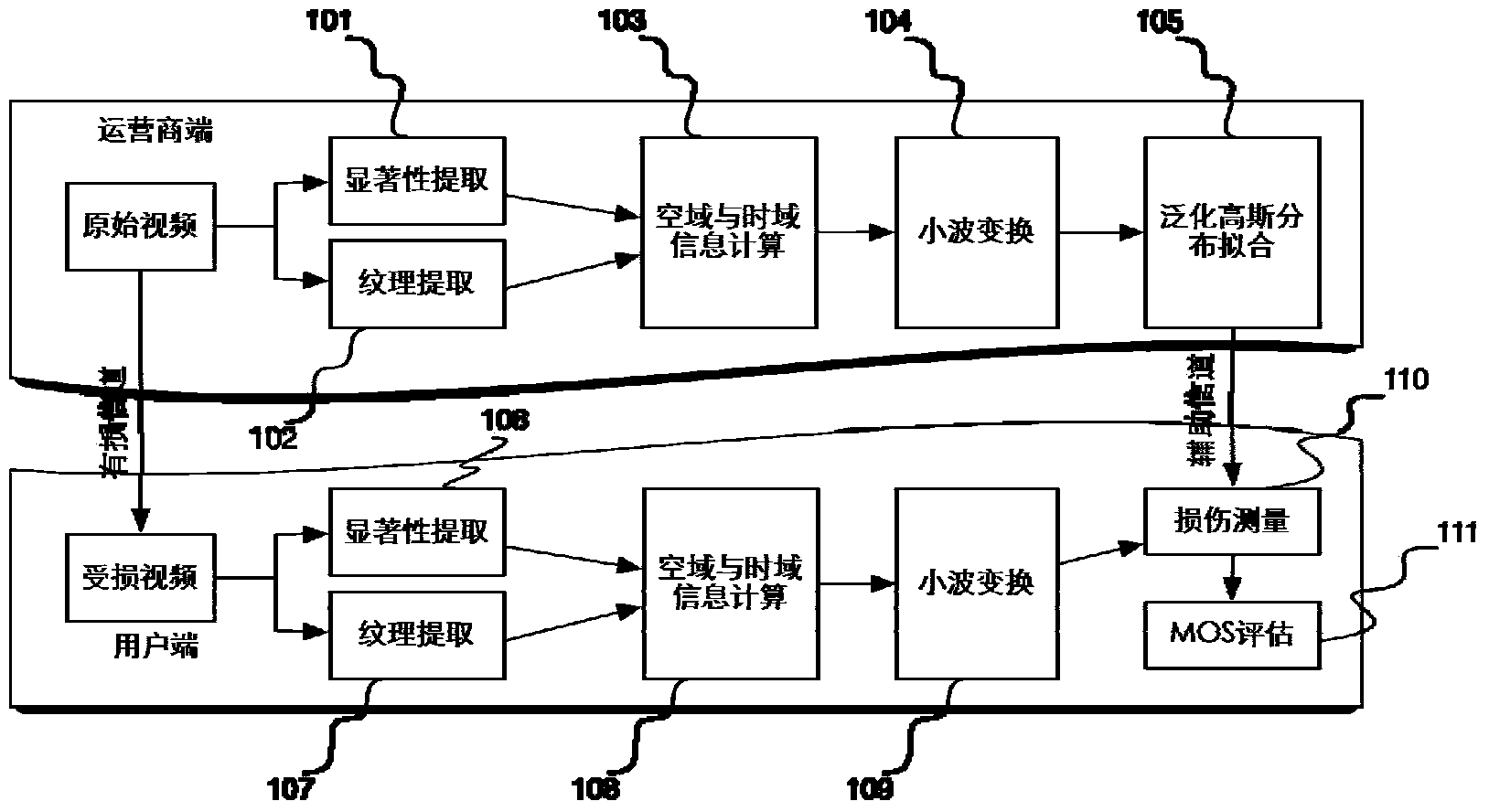Half reference video QoE objective evaluation method based on image feature information
A semi-reference, video technology, applied in the field of communication, can solve problems such as difficult application, no evaluation accuracy test, full reference method or no reference method practicability limitations, etc., to achieve the effect of speeding up processing, easy deployment and implementation
- Summary
- Abstract
- Description
- Claims
- Application Information
AI Technical Summary
Problems solved by technology
Method used
Image
Examples
Embodiment 1
[0029] This embodiment discloses a semi-reference video QoE objective evaluation method based on image feature information, the method comprising:
[0030] The operator side extracts the saliency information map and the texture information map of each frame image in the original video, compresses and processes the saliency information map and the texture information map, and obtains semi-reference data of the original video;
[0031] The user terminal receives the semi-reference data of the original video and the damaged video from the operator, extracts the saliency information map and texture information map of each frame of the damaged video, and obtains the semi-reference data of the damaged video. Semi-reference data of video and damaged video, calculate the damage of the damaged video, and use the pre-trained neural network algorithm to evaluate the subjective quality MOS, wherein the damaged video is the operator’s data transmitted through the lossy channel end of the o...
Embodiment 2
[0047] This embodiment discloses a semi-reference video QoE objective evaluation method based on image feature information, such as figure 1 As shown, the present invention carries out semi-reference QoE objective quality assessment method to real-time video service and mainly is divided into 11 steps, can be divided into operator's end and user's end two parts, wherein operator's end comprises 5 steps, and user's end comprises 6 steps step. Its overall flow chart is as follows figure 1 As shown, each step is described below.
[0048] Operator side:
[0049] 101) Extract saliency information for each frame in the original video separately. Saliency describes relatively more attention-grabbing regions in an image. First, the saliency components are constructed from four aspects of intensity, color, direction and skin tone, and then the 4 components are combined into a saliency map according to different weights. Among them, before calculating the salience component of skin...
Embodiment 3
[0107] On the public video subjective quality database LIVE Video Quality Database (LVQD), the accuracy of the evaluation of the present invention is tested, and the test results are as follows: figure 2 shown. LVQD contains 10 groups of videos, each group contains 1 original (lossless) video, and 15 damaged videos constructed from the perspectives of H.264 compression damage, MPEG2 compression damage, IP transmission damage and wireless transmission damage, so the entire database A total of 150 damaged videos are included. For each damaged video, a subjective score was made according to the ITU-R BT.500-11 standard. Subjective scoring uses a single-stimulus process, with raters giving scores on a continuous scale from 0 to 100. A total of 38 raters were invited for the experiment, and 9 of them were judged to be invalid according to the criteria and were eliminated. After the remaining 29 scores were processed according to the standard, the MOS and score variance correspo...
PUM
 Login to View More
Login to View More Abstract
Description
Claims
Application Information
 Login to View More
Login to View More - R&D
- Intellectual Property
- Life Sciences
- Materials
- Tech Scout
- Unparalleled Data Quality
- Higher Quality Content
- 60% Fewer Hallucinations
Browse by: Latest US Patents, China's latest patents, Technical Efficacy Thesaurus, Application Domain, Technology Topic, Popular Technical Reports.
© 2025 PatSnap. All rights reserved.Legal|Privacy policy|Modern Slavery Act Transparency Statement|Sitemap|About US| Contact US: help@patsnap.com



